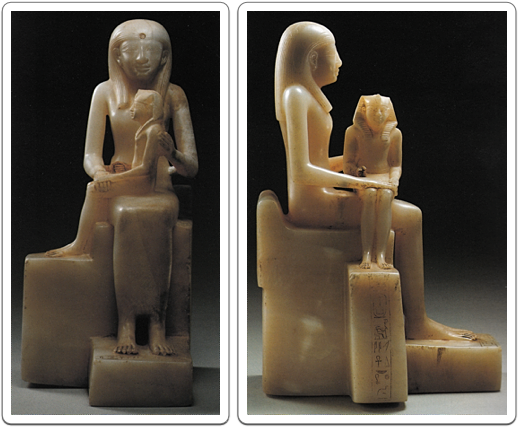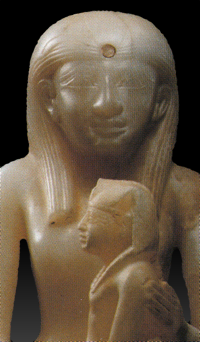This lovely statue, made of Egyptian alabaster (actually calcite), is tell-tale of the beginning of the long reign of Pepi II. The king, identified by the inscription on the support below his feet, is seated on the lap of his mother, queen Ankhenespepi I. He is significantly smaller than the queen, as one would expect from a child, but nevertheless, he is wearing the royal head-cloth known as nemes, with a uraeus on his brow. His right-hand is firmly closed, while his left-hand rests on his mother’s hand.

Front and side views on the statue representing Pepi II on the lap of his mother Ankhenespepi I.
Source: Ziegler e.a., Art Egyptien, pp. 347-348

Detail of the faces of Ankhenespepi I and her son, Pepi II.
The queen herself wears a long, narrow dress. The hole in the forehead of the queen's statue indicates that an object of another material was once inserted here. Her head is covered by the vulture head-dress, which is typically associated with goddesses and queens who are mothers. The missing object on the queen’s brow may thus have been the head of a vulture.
This statue thus confirms that Pepi II came to power as a young boy, still under the protection of his mother, who acted as queen-regent. There may perhaps also have been a religious connotation to this statue: it is strongly reminiscent, although still somewhat different, from statues and amulets showing the goddess Isis with the young Horus on her lap. The main difference, however, is that in the Isis-statues, the goddess normally holds one hand to her breast, an indication that she is breast-feeding her child.